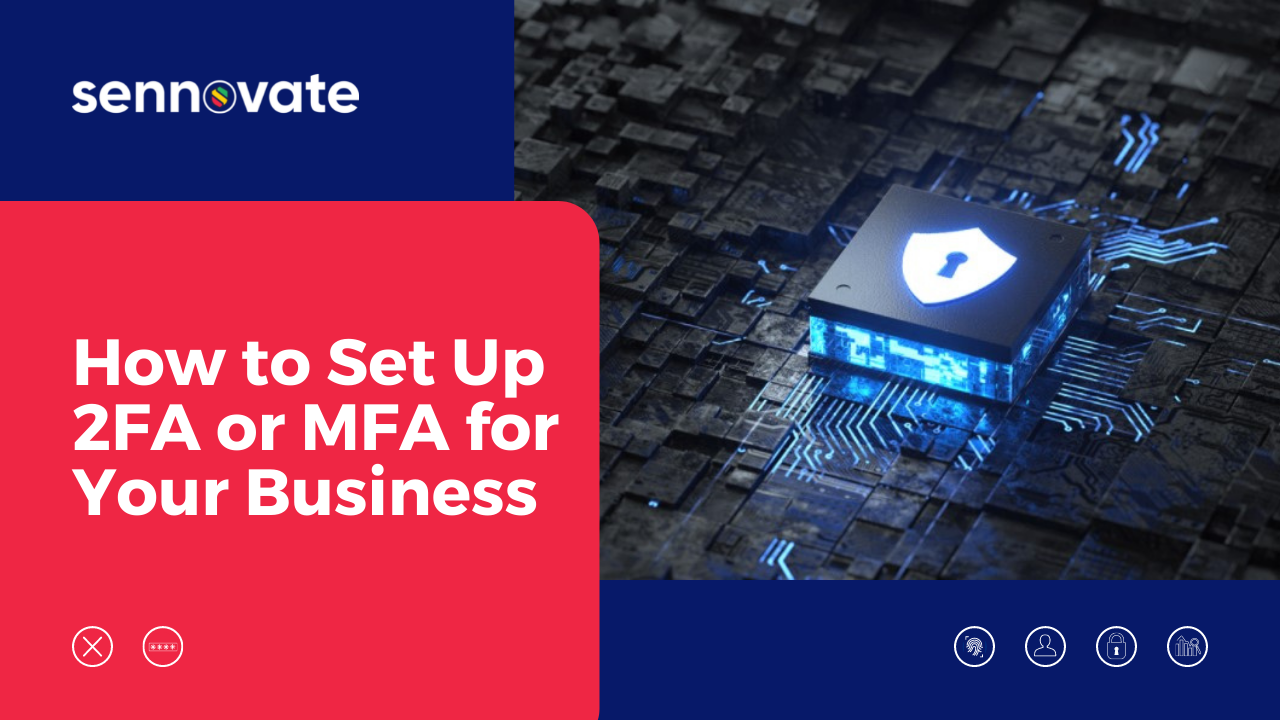
How to Set Up 2FA or MFA for Your Business
People are predictable. And so are their passwords.
The passwords you are likely to use can be predicted by someone who has met or observed you. Take a moment to wonder, what’s your current password? Does it include your name, pet name, or a loved one’s name, combined with a date of birth and united by a special elegant character?
The nod clearly indicates your user account is much more vulnerable to a cyber-attack than you think.
What Is Two-Factor or Multi Factor Authentication?
Within their systems, most small businesses already have some sort of authentication set up. This is also done by requiring workers to enter a password to access company data, helping to ensure that only approved people see confidential information. Two-factor authentication or multi-factor authentication simply adds a step to this method. If the initial password is entered, further proof that the person requesting access is allowed is needed by the system. This can be achieved in a number of ways, such as creating on an external device a randomly created password, using biometric identifiers or requesting confirmation on the smartphone of the employee.
The notable difference between two-factor authentication and multi-factor authentication (MFA) is the variety of factors used to verify your identity in the authentication process.
2FA allows you to demonstrate your identity twice, while MFA measures your identity with various factors such as biometrics, face recognition, time, place, and many others.
How does Two Factor Authentication work?
Let’s break down the two-step verification process into granular steps:
- A site or an application prompts you to log in entering a username and password.
- When you enter the username and password combination, your identity is found and checked by the site’s server.
- The website creates a unique security key for password-less authentication processes. The security key is processed by the provider of authentication services and is checked by the server of the website.
- You will start the second step once the first authentication step is done. The second stage can take different forms, mainly associated with something, such as a cell phone, that you have.
- To verify your identity, you enter the one-time code created in step 4, click on a push notification supplied by an identity provider, or insert a Universal Second Factor (U2F) security token.
Why Should You Use Multi-Factor Authentication?
While you can believe that your information is protected under standard password protection, there are several ways in which cybercriminals may access confidential information through phishing to obtain employee usernames and passwords. These types of attacks are particularly susceptible to email accounts, enabling criminals to submit urgent requests to unsuspecting people and ask them to alter passwords or fill in personal details. Such emails often direct the target to a website designed to look official, but any information entered is sent straight to the criminal. The hacker will then use the password of the user to gain access or use the personal data collected to answer security questions and discover the password. This is what they need to access the most important data if your business is set up only on a single-factor authentication scheme.
Another big safety issue in workplaces is non-compliance by workers. Personnel can resent the need for multiple systems to produce complex passwords and may find innovative ways to subvert this mechanism. Setting up multi-factor will relieve them of this burden by improving protection sufficiently to only enable one complicated password to be remembered.
Without other authenticators, multi-factor authentication makes this data useless. Even if the password is found by a hacker, the two-step authentication allows more knowledge for entry. This makes most phishing activities ineffective and protects data about companies and consumers.
The 5 types of multifactor authentication (MFA) methods are:
- SMS token authentication
- Email token authentication
- Software token authentication
- Biometric authentication
- Security questions
How to Set Up Two-Factor Authentication
Here are the steps your business needs to take to set it up –
-
Identify the Apps that need to be Protected
A cybercriminal can find a way, such as email, to hack any internet-accessible application. Small business owners in non-regulated industries must add two-factor authentication to any application accessible through the internet due to this vulnerability.
-
Identify the People Who Need to Use Two-Factor Authentication
Unless you need to comply with laws, it is not mandatory for all the workers to set up two-factor authentication. We have customers who only add two-factor authentication for a few members of staff. Focus only on the people outside the workplace who need to log into email and business applications.
-
Choose a Deployment Option
Each member of your staff may choose to install an app on a smartphone or get a code-generating hardware key or token. Based on your two-factor authentication program, your workers will also have other options such as a code sent by text message or a phone prompt asking, “Did you log in?”
Sennovate is here to guide you through the implementation process or answer questions you have about two-factor authentication. Contact us online or by phone at +1 925 918 6618
Why Choose Us?
- Sennovate been partner with all the MFA service provider like Okta, Idaptive etc., so Sennovate gets best discount from the service provider.
- Sennovate will understand the client requirement and based on that we will provide the best tool which reduce customers pain and cost.
- Sennovate also have a good experience in Opensource tool which provide MFA and reduces customer cost.
- Deployment process with Sennovate is quick.
